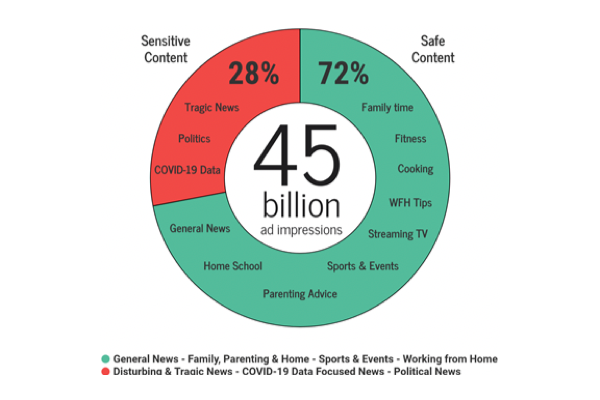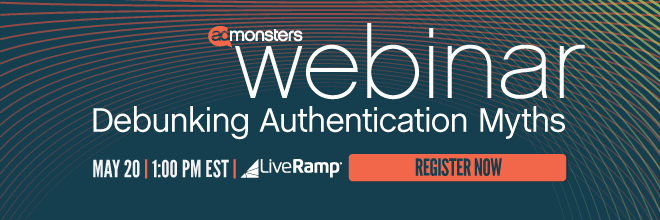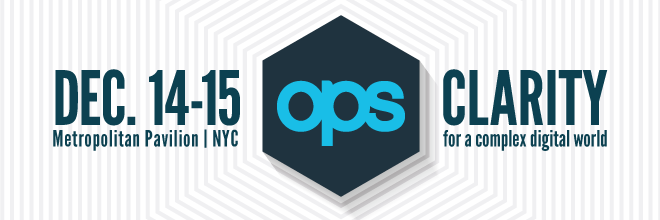 |
|||||||||||||||
|
|||||||||||||||
| Supply Partners Caught in Content-Scraping Sting |

Source: Image by Tumisu from Pixabay
|
| For a while, CNBC reporter Megan C Graham has been finding scraped versions of her articles on bogus sites like the “New York Times Post” and puzzling why legit advertisers were appearing. So she set up her own site with a bunch of content-scraped content and applied to work with a host of supply partners (many TAG-certified). Her reach to advertisers was immensely amplified by reseller agreements, and she quickly found ads from Kohl’s, Wayfair, and Overstock on her site. |
| Several folks who have been a long time on the ad-tech rodeo reminisced about a bot network Digiday’s Jack Marshall set up for an article back in 2014. In fact, we were surprised that blatant content-scraping was still being used in fraud schemes these days when it’s so easy to sniff out. The reaction is less “This is nothing new!” than “How depressing that this s*** is still going on.” While this episode may have embarrassed some major supply partners, none are likely to suffer—sure, some DSPs will pay lip service to the idea that they will be choosier about their supply partners, but nobody’s behavior will change because too many intermediaries benefit from a bit of fraud. Any platform or reseller grabs their take, but the game is more complicated. There’s the potential for money-laundering schemes, using ad-tech pipes to wash illicit cash. But these bogus site networks are also handy for media buyers looking to keep overall campaign CPMs down by paying penny CPMs. Ultimately, this not only takes revenue out of publisher pockets but also depresses CPMs. Do end advertisers know what’s going on? Several of them that appeared on Graham’s BS site declined to comment on the situation. Despite all the talk of transparency from brands and bold initiatives like Ads.cert and Sellers.json, advertisers know the bargain—the vast scale and reach of open programmatic comes with a healthy dollop of fraud. However, there may be one party that comes out looking particularly bad from Graham’s sting—one whose benefit was already questionable. If the majority of pipes that helped fill Graham’s inventory were TAG-certified, just what exactly is the value—or point—of that certification? |
| Google’s Antitrust Reckoning Looms |
| Oh my my—we may be in for a late summer antitrust filing! What a treat! The Wall Street Journal has learned the Department of Justice will likely file its antitrust suit in late summer, with Texas’ attorney general filing in the fall for a pile on. In a very considerate fashion, Google’s external law firm offered something resembling a defense in the form of an expert paper submitted to the Australian Competition & Consumer Commission (ACCC). But what about a preview of the plaintiffs’ argument? Well, here’s tech-centered think tank Omidyar Network with a “Roadmap for a Digital Advertising Monopolization Case Against Google.” My goodness, this is getting juicy fast! |
| Many in the industry are likely gobbling down popcorn in anticipation of the DOJ filing, but we want to temper our expectations. Sure, the expert report to the ACCC paints an unfamiliar landscape of the market we all know and love, but we wonder if the Omidyar roadmap actually makes a compelling argument for an antitrust case. Certainly, Google is a (dominant) walled garden, but Amazon is already demonstrating it can grab a fair chunk of ad spend with a similar walled garden. And the demise of the third-party cookie could potentially strengthen, but the shift away from third-party cookies to identity solutions will be highly beneficial outside Google’s walls. Even the creation of the Google-platform-only ads data hub—which ironically Google brought to life after determining the platform-portable DoubleClick ID wasn’t compliant with GDPR—could be viewed as a limitation (especially compared to its predecessor). At the same time, these are mainly buy-side perspectives—the real question is on the supply side, where the opaque nature of GAM’s operations and “denial of interoperability” (e.g., the whole reason header bidding exists) point to anti-competitive practices. To begin with, migrating away from GAM is a non-starter for many publishers as it is burdensome and they will lose out on AdX/DV360 demand. Is that anti-competitive enough? We are not lawyers, something our parents often sigh about over a third glass of Merlot. So we won’t be munching popcorn in excitement of the DOJ’s , but chewing our nails with anxiety—because if this is a swing and a miss, Google’s dominance over the publisher ad-server market may be forever. |
| There’s Gold in Them Thar’ Hills | ||

Source: OMG—Adapting to COVID-19: Programmatic Marketplaces
|
||
| While it may be nearly impossible to find a silver lining in the cloud of uncertainty we are all currently under, optimism in the face of adversity is never a bad strategy. Things will get better, notwithstanding the reality that there will be a new normal in our future. This will take some getting used to, but we are a resilient species as we’ve proven time and time again. As evidence, see this excerpt from OMG’s just-released study, Adapting to COVID-19: Programmatic Marketplaces: Even within content classified as “News” as little as 30% of “COVID-19” content could be considered negative. |
||
| Advertisers with the confidence and optimism to invest in building their brands now, while many of their competitors are either frozen with fear or in full retreat, will benefit from a strategy that embraces the opportunity to invest in premium environments. As OMG states: In light of the circumstances, our Programmatic Investment team is: Maintaining first-look preferred deals where advantageous | Maintain high win rates on top priority inventory. (Top 20 Pubs) Move to zero/low-floor private marketplaces (PMPs) | Allows buyers to leverage auction mechanics to set prices that closely mirror these price fluctuations. (Top 20 Pubs – Display This flight to quality and the ability to invest now at all-time lows represents an unprecedented buyer’s market. Check out the Duration Media Highly Viewable Premium Publisher Marketplace where savvy marketers can target more than 70 million viewable impressions per day. |
||
|
||
 |
| Tracking Video Creative Just Got Easier For Laggards |
| It remains a mystery why the video ad ecosystem continues to drag its heels on upgrading from VAST 2.0 to VAST 4.0. In case you don’t remember, VAST 4.1 made updating to VAST 4 all the more worthwhile because it addressed some major flaws with interactivity, viewability and verification. In sticking with VAST 2, you’re really only dealing in a world consisting of desktop video impressions and likely still customizing your video players to serve ads being delivered from different servers—while providing a subpar user experience. That’s why another important thing that VAST 4 brought to the table was the inclusion of the UniversalAdId feature for including a creative identifier that is maintained across all platforms, making it easier to track ads more accurately and easily. Luckily for those still stuck in VAST 2.0 land, there’s a trick for using Ad-ID. It all came about when Ad-ID got to wondering whether the UniversalAdId element could be carried through VAST 2.0 and, if so, in which field. So they partnered with A+E, NBCUniversal, and Hulu, to develop a set of best practices for the UniversalAdId in Vast 2.0. There’s also an upcoming VAST 2.0 Best Practices webinar—with Ad-ID’s Manager of Supply Chain Activities, Beth I. Frutkin on June 4, 2 pm ET—to learn how to include an Ad-ID code in the AdID element of VAST 2.0. |
| Being able to use Ad-ID codes in VAST 2 will significantly help the industry transition from VPAID (goodbye latency) to VAST4, SIMID (Secure Interactive Media Interface Definition), and OMID (Open Measurement Interface Definition). With Ad-ID codes in place, the industry can start moving towards better transparency, brand safety, attribution, and more accurate reporting in video advertising. "Ad-ID provides the opportunity to streamline the ad serving process and deliver on the promise of the right message to the right person at the right time. By incorporating the UniversalAdId into VAST 2.0 as a best practice, the digital ecosystem will improve user’s experience, reduce troubleshooting and create greater transparency to marketers and agencies,” says Jermaine Roseman, Senior Director of Advanced Advertising Solutions for A+E. Ad-ID is not supported in VAST 1.0 or VAST 3.0 and the support for 2.0 is meant merely as a stopgap. The best move for getting Ad-ID codes into the supply chain will be getting the idlers to adopt the latest version. Good luck to Ad-ID and the IAB with that one. |
 |
||||
|
||||
 |
||||
|
||||
 |
||||
|







